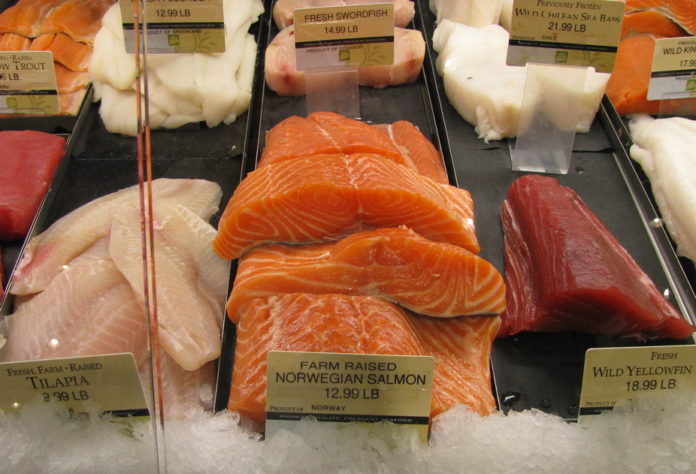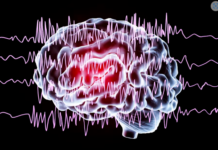
By Kenny Black, Scottish Association for Marine Science
The amount of aquaculture produce worldwide – including farmed fish and shellfish – has now overtaken global beef production, by 64m tonnes to 57m tonnes. Perhaps more remarkably, we are on course to harvest by 2015 more fish, shellfish and other aquatic foods from fish farms than those caught in the wild.
This represents a paradigm shift in our relationship with the aquatic environment, coming as it does tens of thousands of years after agriculture finally superseded hunting and gathering as our primary source of nutrition from the land. Fish stocks all across the globe have been impoverished by overfishing and poor management. Although this has been going on for centuries, it reached a peak in the post-war era when the greater technological horsepower of factory fishing fleets was brought to bear to maintain catch rates even as fish numbers declined.
The global catch has plateaued at around 90m tonnes per year, although this hides the decreases in marine catch that are compensated for by increases from inland fisheries. About 15m tonnes from this total (down from 30m in 1994) is rendered down to produce 5m tonnes of fish meal and 1m tonnes of fish oil, typically from small, oily pelagic fish like anchovies, sprats and pilchards. Aquaculture uses about two thirds of this fish meal and four-fifths of the fish oil to feed other fish.
This link between open sea fisheries and farmed fish is important. As aquaculture continues to grow (around 8% per year on average), fisheries fluctuate with climatic variations such as the El Niño-Southern Oscillation, or when failure to manage them properly causes stocks to fall. In order to feed ourselves and maintain the level of healthy omega-3 fatty acids in our diet, one solution currently being researched is to genetically modify oil seed plants to be more rich in omega-3. That way we can supplement the fish meal fed to farmed fish with oil-rich meal from plants – something from which fish and humans alike can benefit.
Substituting fish food made from plants for that made from fish meal gives a higher ratio of fish produced to fish consumed, but this may reduce the amount of health-giving omega-3 fatty acids consumers eat. A solution to this problem may come from genetically modifying oil seed plants and microbes to provide more omega-3 oils as a replacement.
There are environmental impacts, sometimes severe, from both capture fisheries and fish farms. Fishing has been responsible for a total transformation of the sea, by destroying sealife from whales to whiting to whelks, and also indirectly as bottom trawling destroys seabed habitats, or from blast fishing with dynamite that destroys tropical coral reefs.
This destruction has been largely unnoticed by the general public – these aquatic ecosystems are essentially other worlds into which we cannot see from the surface. And we are short-sighted, able only to reflect on the change in our own short lives, with little or no concept of the impact over several generations. This sense of a shifting baseline – failing to go back far enough to compare fish populations before the start of heavily mechanised commercial fishing – has written a warped view of the true state of the oceans into the scientific narrative. It is hard to reconstruct past fisheries, but the evidence available shows that the sea used to teem with mammals and fish to an extent we can hardly comprehend.
Fish farming has its impacts too, for example where enormous areas of mangrove forests have been sacrificed to tropical shrimp farming. This is particularly important as these forests are a vital natural barrier for coastal protection, and harbour nursery areas for wild fish. A loss of habitat and biodoversity is very hard to restore, and has a knock-on impact on humans too.
Cage farming in the open sea can cause problems from fish escapes into the wild, parasites and diseases, the overuse of medicines and chemicals, and the pollution of water and the sea bed. Considerable effort is being made to quantify and reduce these problems and their effects, but as progress is made the industry expands, bringing with it more problems.
The greatest concern for fish farming in temperate waters is the effects of sea lice parasites on wild and farmed salmonids (salmon and trout). Farmed Atlantic salmon are infected by lice from wild fish and can rapidly develop serious infections unless well tackled with medication or cleaner fish. An outbreak of lice on farms can lead to high infection rates and death in young migratory salmonids as they reach the sea. A vaccine is urgently needed.
So should we mourn that the cow is overtaken by the fish? Far from it! Grain- and corn-fed beef is about as environmentally damaging as livestock can get, with a carbon footprint more than 10 times higher than farmed salmon and perhaps 60 times higher than a wild herring. The food conversion ratio, edible yield, energy and protein retention of farmed salmon is much higher than swine or chicken.
What is needed is diversification. As freshwater becomes more scarce, saltwater sealife will become more important. We need to move from carnivorous fish such as salmon to herbivorous fish, shellfish, echinoderms like urchins, starfish, sea cucumbers, and seaweeds. This will require new production methods and also changes in consumer attitudes and behaviours. But the growing food demands of a hungry planet and the impact of climate change will inevitably mean that – despite current problems – the future will be fishy, and farmed.
![]()
Kenny Black does not work for, consult to, own shares in or receive funding from any company or organisation that would benefit from this article, and has no relevant affiliations.
This article was originally published on The Conversation.
Read the original article.




















